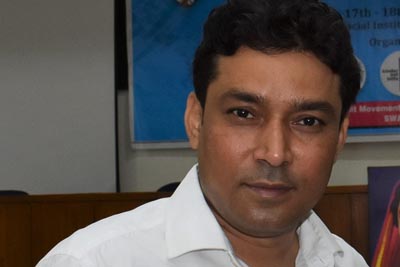
Mr Rahul Singh – General Secretary NDMJ -NCDHR
National Dalit Movement for Justice (NDMJ)
National Campaign on Dalit Human Rights (NCDHR)
Over the recent years, Dalit and Adivasi communities have been increasingly and powerfully asserting their rights and entitlements denied for centuries. This resulted in further increase of atrocities against them. The worsening situation prompted the Indian Parliament to consider the PCR Act 1955 and the normal provisions of the Indian Penal Code inadequate to check and deter crimes committed by dominant caste groups against the SCs & STs. Hence, Parliament found it necessary to enact the SCs and STs (Prevention of Atrocities) Act, 1989 & Rules 1995. This Act is expansive in its scope in many respects: in the list of offences, in constituting monitoring mechanisms, in identifying officers to perform specific responsibilities, in defining their specific duties, in framing penalties for offences committed, and in assuring relief and rehabilitation measures to the victim-survivors. It has, indeed, promised to address the issue of discrimination and atrocities faced by Dalits and Adivasis. Two decades of monitoring the implementation of the Act has provided us with data regarding its low rate of benefits and high rate of failures, that is, the performance scale of the national and state governments plunges far more towards the debit than the credit side. On the part of the police and other concerned government officials, proper and adequate response as per law towards to the victims and witnesses of atrocities has often been lacking. In the court of law, the verdict in most of the cases has been in favour of the perpetrators either on technical grounds, or due to the public prosecutors deliberately failing to argue the case properly and effectively. The end result has been high acquittal and low conviction rate under the PoA Act. Though various constitutional provisions have been made at the National and State level but the atrocities against them are increasing day by day as justice is denied to them. So in order to ensure speedy justice to them, ATM system has been developed. iv Atrocity Tracking & Monitoring (ATM) On the other hand various Dalit and Adivasi Organization working with Dalits and Tribals are engaged in various activities like fact finding reports, registration of cases under Prevention of Atrocities Act, pursuing the case with police and administration, helping witness and victims for legal battle. However, these organisations often face difficulty in accessing fact finding reports, in retrieving the details of case, updating victim and witness with their trial, etc as they lack a system where data can be stored, shared and accessed. So in order to overcome this problem a system in form of ATM has been generated. Hence, this system will help the organisations to store, share and access data anytime from any part of the country. Therefore in order to address the above lacunas and non implementation of SCs and STs (PoA) Act 1989 and its Rules 1995, ATM as a web based tool has been introduced and launched under the aegis of National Coalition for strengthening SC & ST PoA Act (NCSPOA) by National Campaign on Dalit Human Rights (NCDHR) and is lead by one of its unit called National Dalit Movement for Justice (NDMJ). The formal launch of Atrocity Tracking & Monitoring system (ATM) took place on 27th March 2014 in Constitution Club of India, New Delhi. The guest of honour, Former chief Justice of India Dr. K.G. Balakrishnan launched the ATM webpage and showed a green flag to the online reporting follow up and tracking of atrocities faced by Dalit & Adivasis in India. ATM contains functionality that is common across all Human Rights Organizations and particularly to National Coalition partners working on caste atrocities. ATM helps in creating triggers & alerts through emails and short messaging system by various stakeholders in order to monitor the atrocity acts against Dalits and Tribals in different parts of our country. Under this system anyone having access to internet can go the website where a no is given. This no is assigned to the ATM website exclusively. As soon as the person will send a message on this no, the website will automatically identify its circle and will send a message on the mobile no of the concerned DHRD in that circle. After the message is received by the DHRD, he will enquire the validity of the case. Once the validation is done, the DHRD will go to the concerned authority so that the necessary action against the atrocity case can be taken as soon as possible. Simultaneously, the DHRD will also upload the case on the ATM website from where the progress on the particular case can be tracked. Such case uploaded by the DHRD, will be accessible to all the DHRD in the other regions.

 ]
]

 ]
]